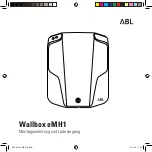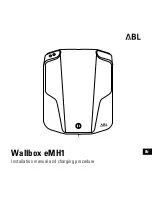
6
FIGURE 5: PART SECTION THRO' BOTTOM OF
SWIVEL SHOWING GREASE SEEPAGE POSITION
WHEN FULL
10020
12.
Position ball studs on socket ends of tie
rod in holes in steering arm and bell crank
or idler arm. Install a ball stud nut on each
stud and tighten firmly to seat the tapered
seat.
13.
Use a torque wrench to tighten stud nuts
to 160-215 lbf•ft (217-291 N•m) torque.
Advance nut to next aligning cotter pin
slot and install a new cotter pin.
Note:
Adjust toe-in as directed in
paragraph "TOE-IN ADJUSTMENT" of the
PRÉVOST CAR INC. MAINTENANCE
MANUAL.
Note:
If tie rod is not properly aligned with
stud, binding will result.
8. HUB UNIT ASSEMBLY
1.
Fit hub bearing distance piece (60, Fig. 8)
onto swivel stub axle (58, Fig. 8).
2.
Fit inner and outer hub bearing cups (11
& 64, Fig. 8) onto their bores in hub (8,
Fig. 8).
3.
Fit inner hub bearing cone (11A, Fig. 8)
into its cup in hub (8, Fig. 8).
4.
Press hub oil seal (12, Fig. 8) into position
in hub (8, Fig. 8) using a suitable bumper
tool which locates on outer part of seal to
prevent damage on assemble.
5.
Fit hub assembly onto swivel stub axle
(58, Fig. 8).
6.
Fit outer bearing cone (64A, Fig. 8) into its
cup (64, Fig. 8).
7.
Fit hub bearing washer and hub bearing
nut (6 & 67, Fig. 8). Tighten nut hard with
the aid of a small tommy bar just enough
to take up bearing slack.
8.
Fit hub bearing nut pinch bolt and nut (66
& 5, Fig. 8), tighten finger tight.
9.
Adjust 'End Float' as follows : Rotate
hub and using a hide faced mallet, knock
hub backwards and forwards along axle
arm to 'Shock Load' and thus settle
bearings in position.
Note:
It is very important to rotate and
'shock load' the hub because :
The rotation serves to ensure
that bearing rollers settle into
running in their correct tracks.
The 'Shock Load' is to ensure
that bearings are seated
correctly up to their abutment
shoulders.
Test the tightness of hub bearing
nut (67, Fig. 8), if loose, re-
tighten hard.
Rotate and 'Shock Load' the hub
again.
Continue this procedure until
hub bearing nut (67, Fig. 8)
cannot be tightened further after
hub has been rotated and
'Shock Loaded'.
Back off hub bearing nut (67,
Fig. 8) by approximately 30°
then rotate again and knock hub
outward along axle arm to
release bearings.
Mount a dial indicator on hub
flange (8, Fig. 8) and position its
pointer on end of axle stub. See
figure 6.
Rock the hub backwards and
forwards along axle arm, taking
a reading on dial indicator.
The correct 'End Float' is
between limits 0.0005 inch to
0.002 inch (0,013 to 0,050 mm).
Tighten the hub bearing pinch
bolt nut (5, Fig. 8) to 24-26 lbf•ft
(33-35 N•m).







































